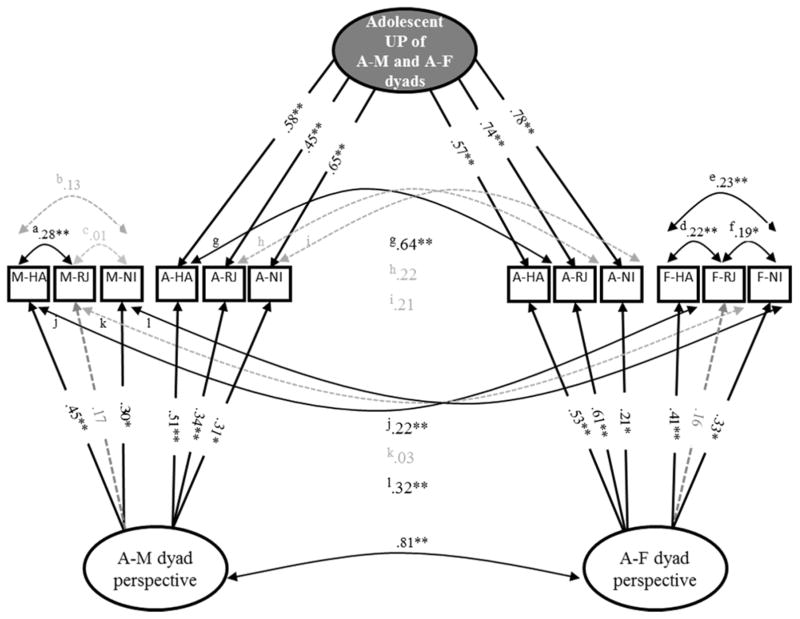Figure 3. Optimal multitrait-multimethod confirmatory factor analysis extracting dyad and adolescent unique perspectives of parent-child rejection.
White ovals are shared dyad perspectives; gray ovals are adolescent unique perspectives. A = adolescent; M = mother; F = father. UP = unique perspective. HA = hostility/aggression; NI = neglect/indifference; RJ = undifferentiated rejection. Gray-dashed paths are non-significant at .05 level. Model fit: χ2(47) = 51.680, p = .30, CFI = .992, RMSEA = .025.
a,b,c,d,e,fWhen significant, these residual covariances indicate that common variance remained across a given parent’s own reports of parental rejection after shared variance across dyad members’ reports was accounted for via the Dyad Factor.
g,h,iWhen significant, these residual covariances indicate that common variance remained across an adolescent’s two reports of a given facet of rejection after accounting for common variance already captured via the correlation between Dyad Factors and their dual loadings on the adolescent Unique Factor.
j,k,lWhen significant, these residual covariances indicate that common variance remained between parents’ reports of the same facet of rejection after accounting for shared variance across parents’ reports of the same facet via the correlation between Dyad Factors.
**p < .01; *p < .05.

